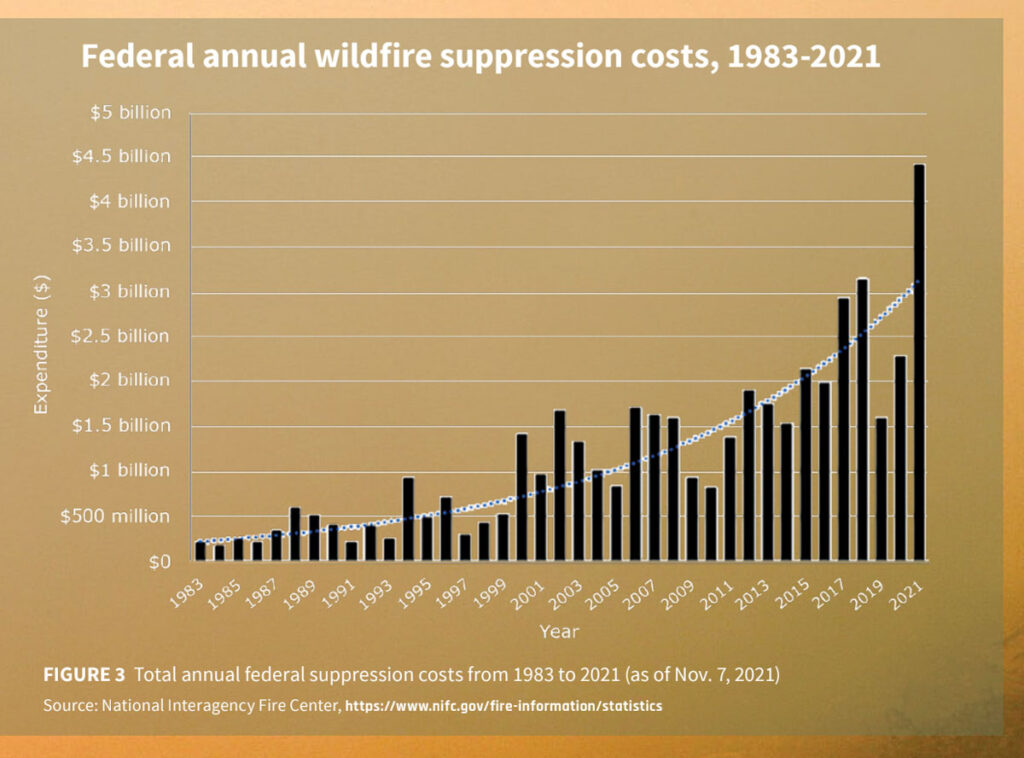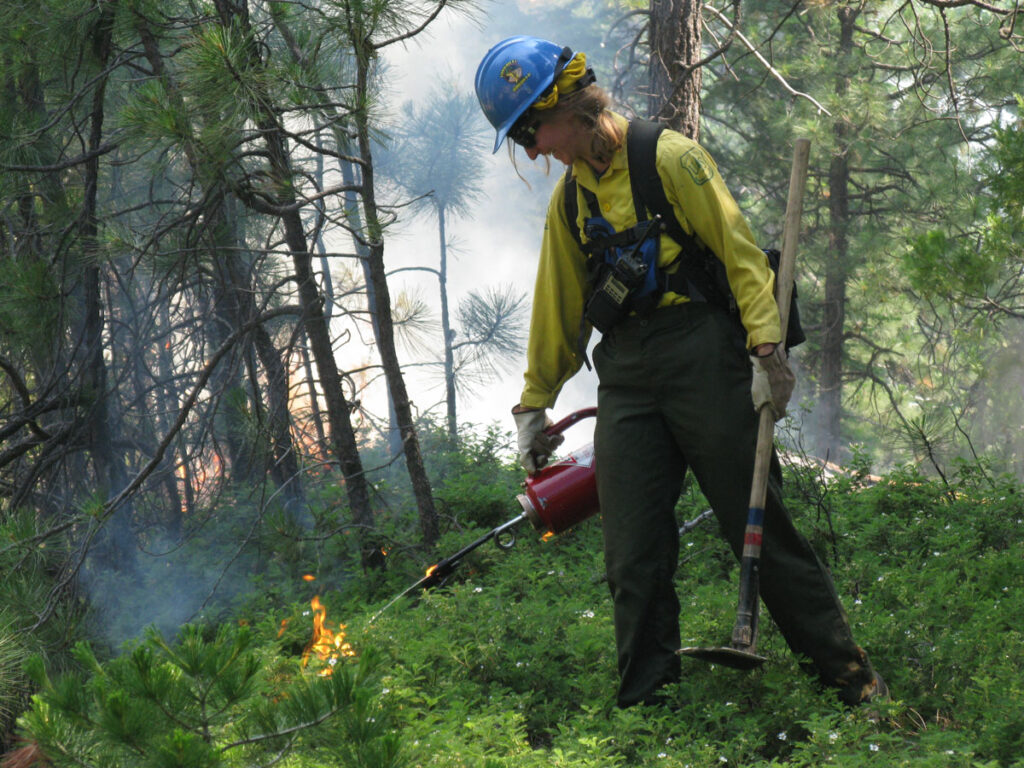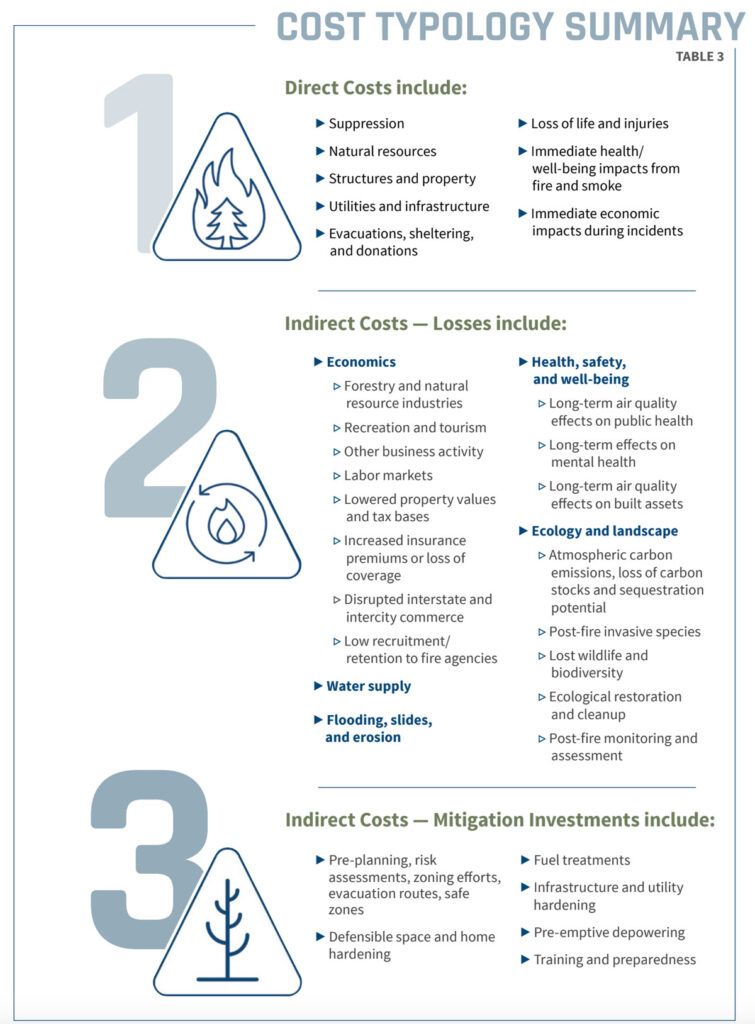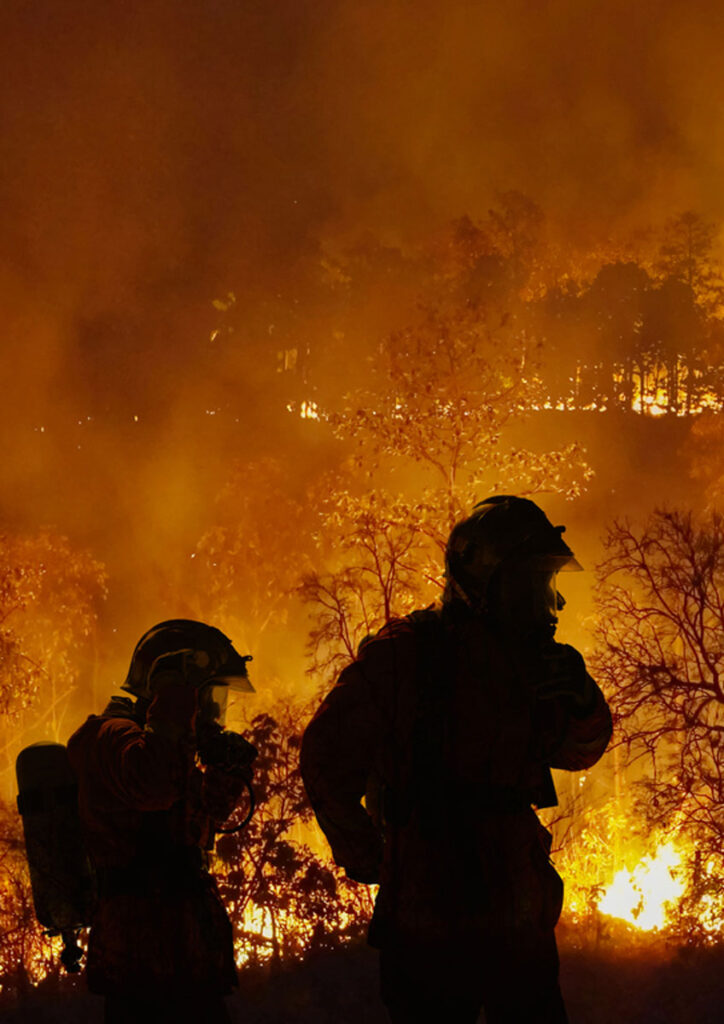Close
Close


In the first part of the report SIG summarized previous attempts to quantify the costs of wildfire, including at national, state and regional levels. While these studies were sometimes contradictory, and often used different data sources, they did agree that national wildfire costs are very significant, in the hundreds of billions of dollars annually.
Most importantly, the team confirmed the unmet need for an updated, holistic study that includes a comprehensive typology of costs.
In the main body of the report SIG presents a typology of wildfire costs that it developed, which is organized into three overarching categories, each with subcategories: Direct Costs (suppression, structures, evacuations, etc); Indirect Costs – Losses (natural resources, recreation, insurance, water supply, erosion, air quality, carbon emissions, cleanup, etc); and Indirect Costs – Mitigation Investments (defensible space, evacuation planning, fuel treatments, training, infrastructure hardening, etc). The focus was on cost categories that are well established and understood, ensuring results are rigorous and broadly applicable.
Within each cost subcategory, the team leveraged available studies to present examples of those costs calculated for previous fires, methods for calculating costs, and the availability of data needed to account for them. They also presented deep-dive case studies into the costs associated with eight specific wildfires that burned in the Western US since 2011, chosen in conjunction with the stakeholder working group.
SIG’s analysis found that the ballooning fire suppression costs and structure damage in the Western US are just a small part of the true costs of wildfire, with fully loaded costs up to three orders of magnitude larger. Additionally, it was clear that effective investments in wildfire resiliency, which can lead to reductions in wildfire costs far in excess of those investments, are deprioritized in favor of suppression expenditures in a relationship that is the inverse of the wildfire cost structure.


The study identified three initiatives that would greatly improve how wildfire costs are understood and facilitate more effective budgeting and planning.
First, a national system to consistently and transparently quantify the full costs of wildfires would motivate the public and policymakers to be more aggressive about mitigation.
Second, a standardized full-cost accounting system would facilitate more equitable and strategic distribution of aid and compensation after wildfires.
And finally, resolving the longstanding issue of how to fairly share suppression costs among different agencies and levels of government would enable transparency and equity and would protect non-suppression budgets from being commandeered during emergencies.